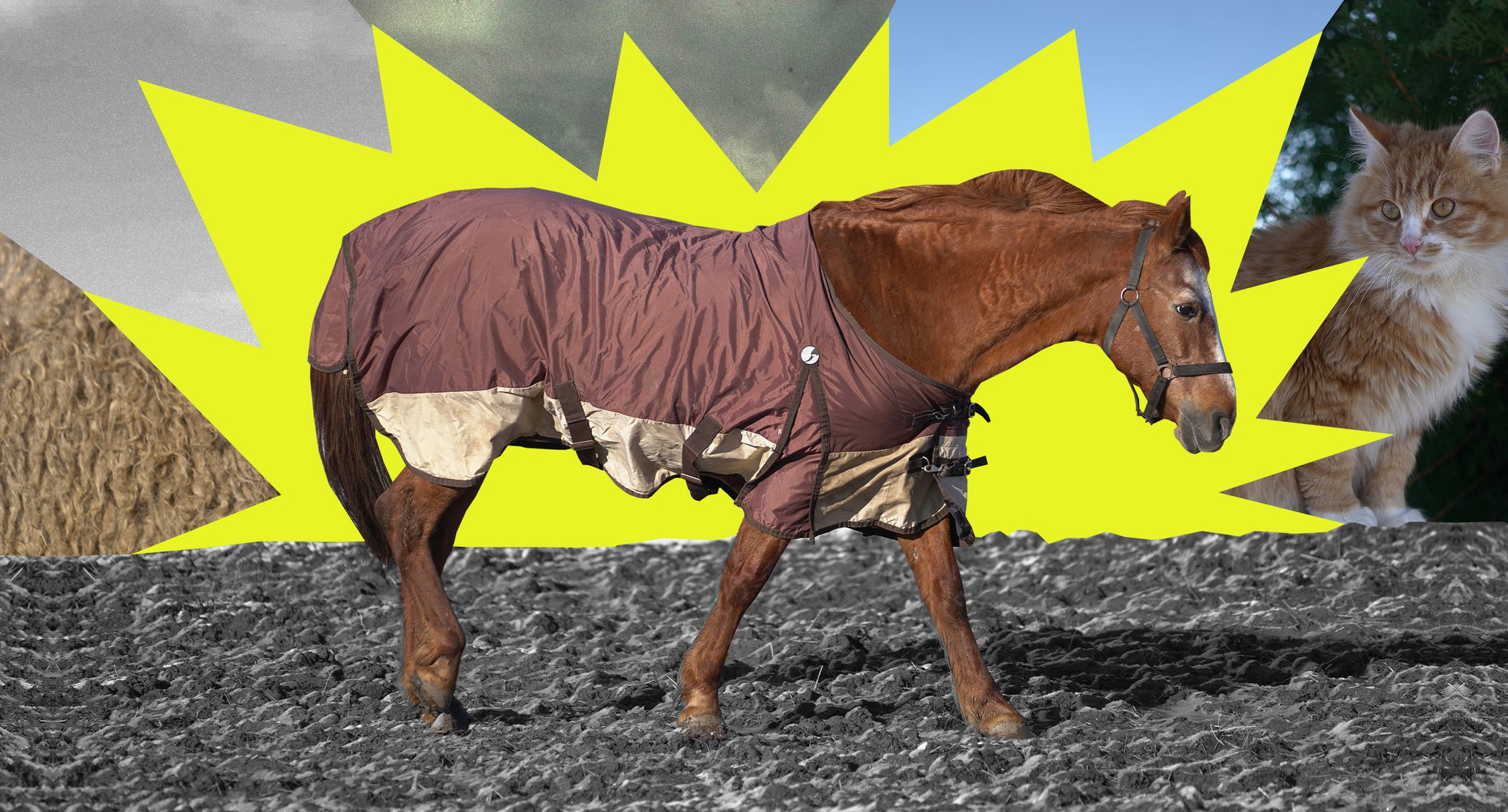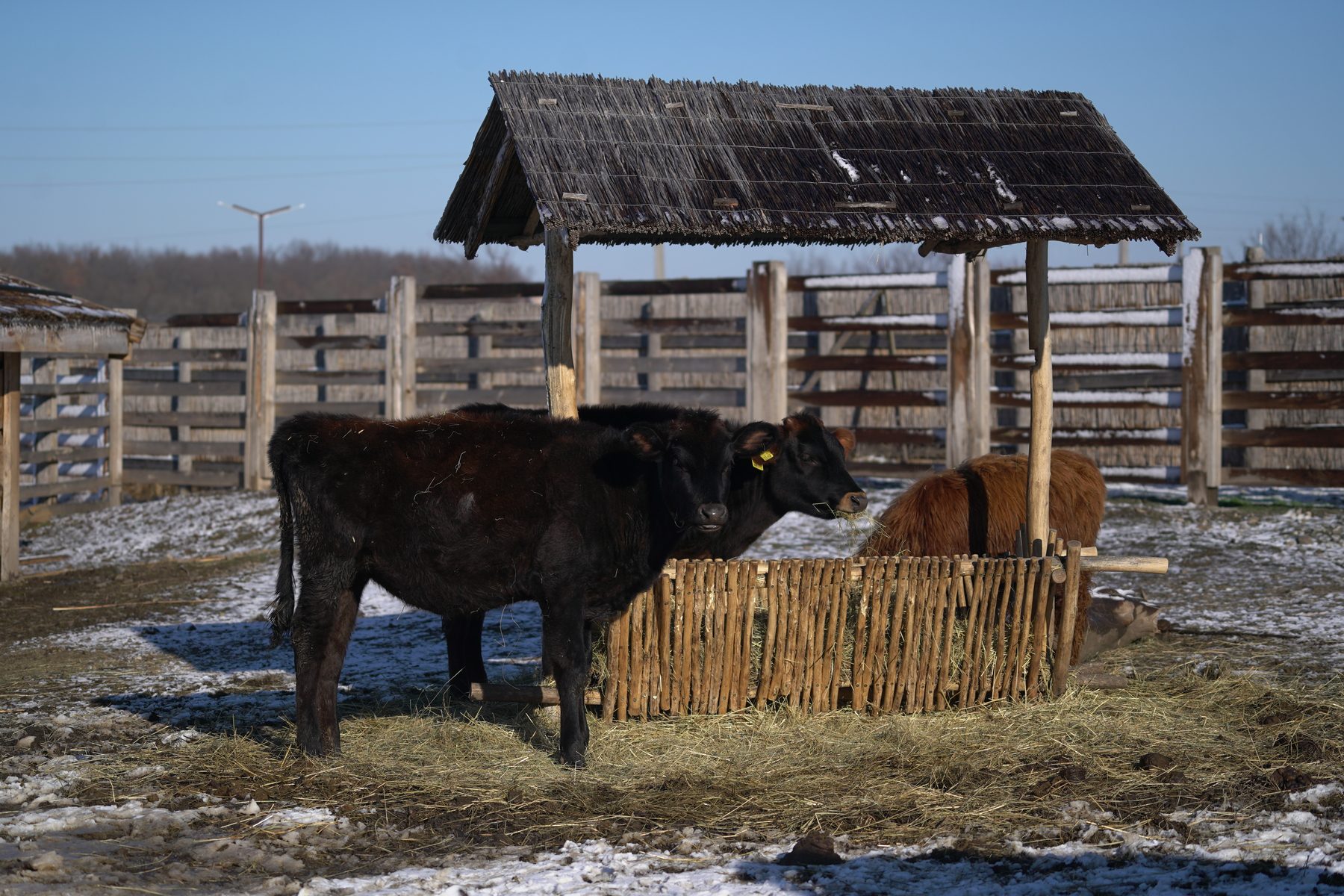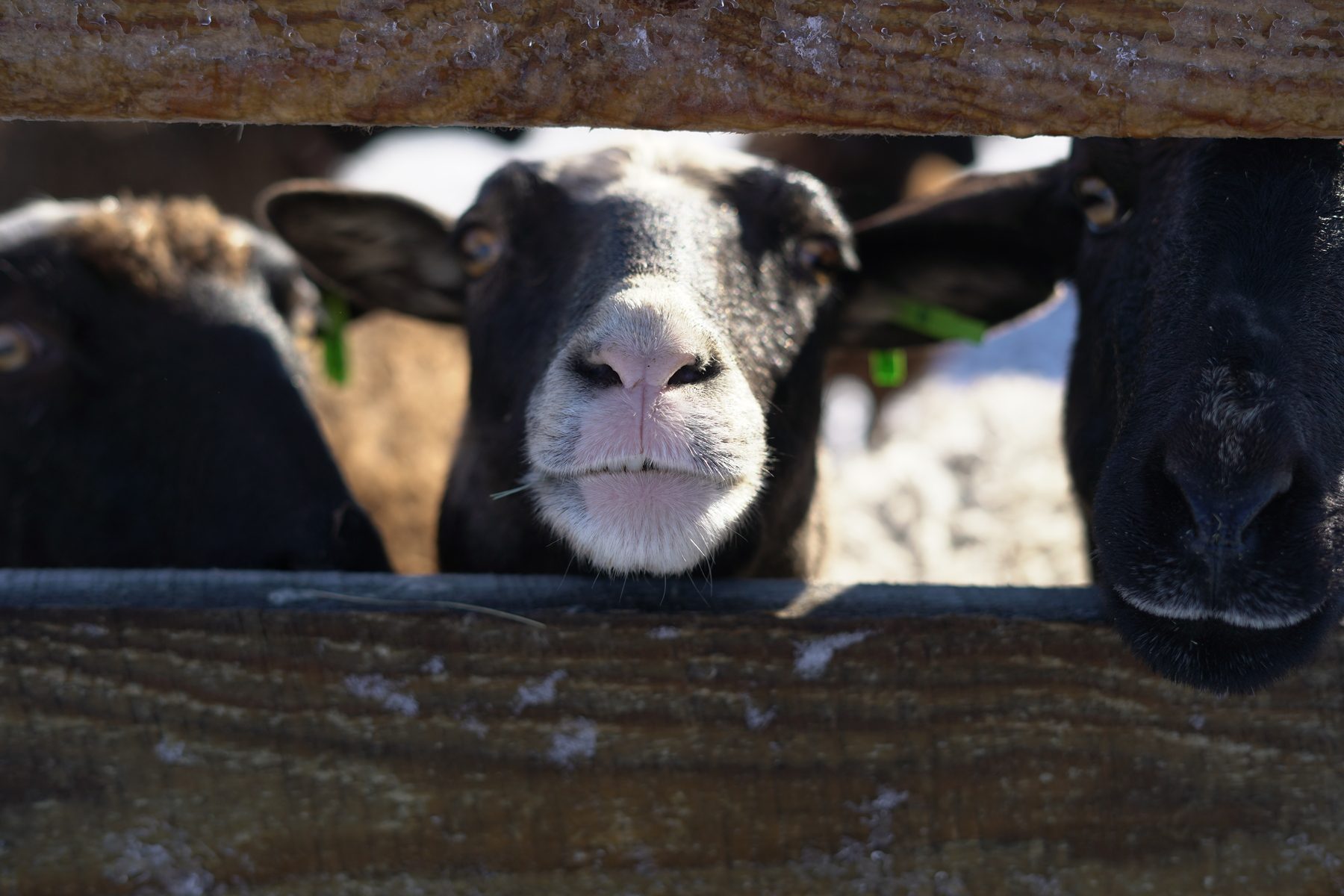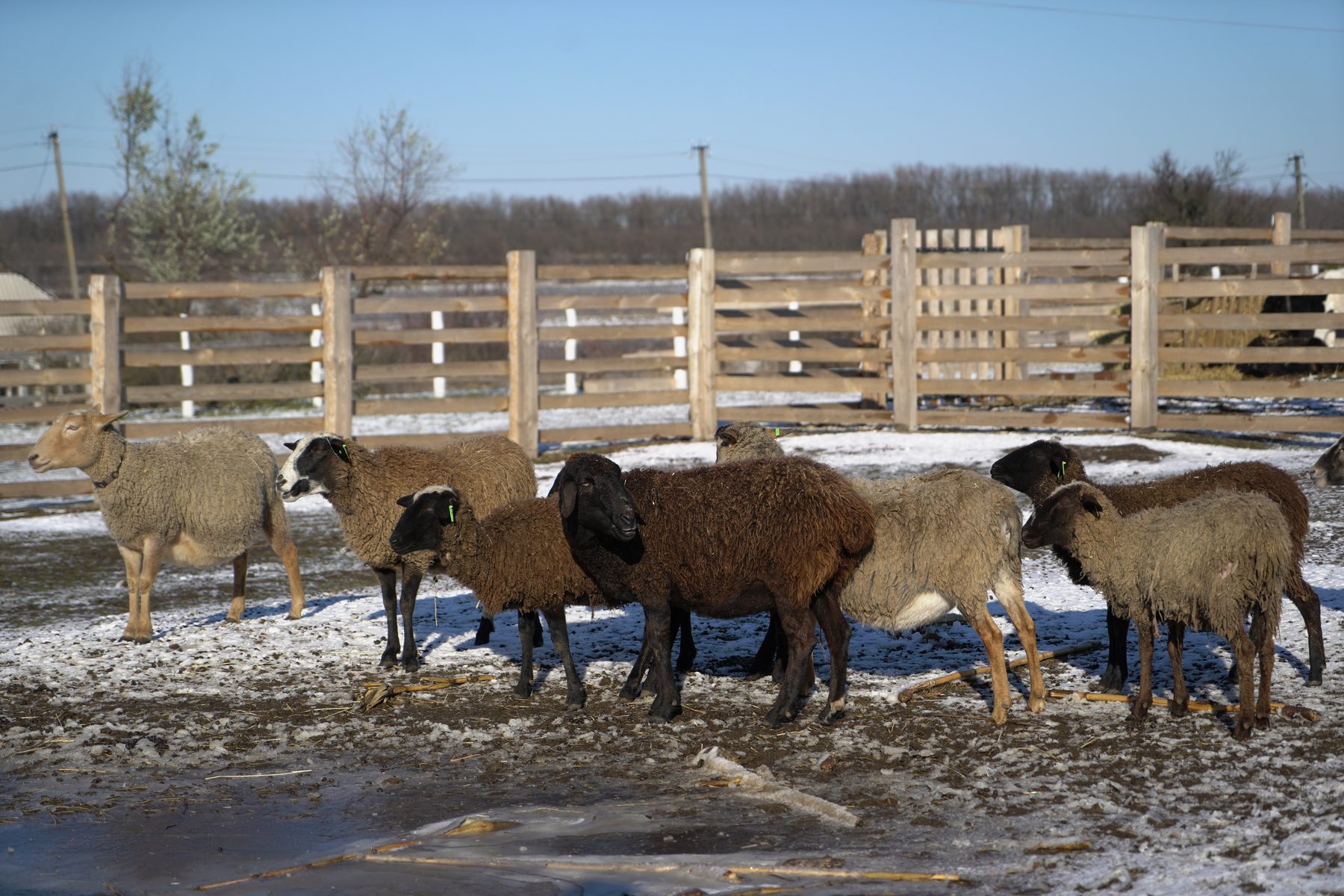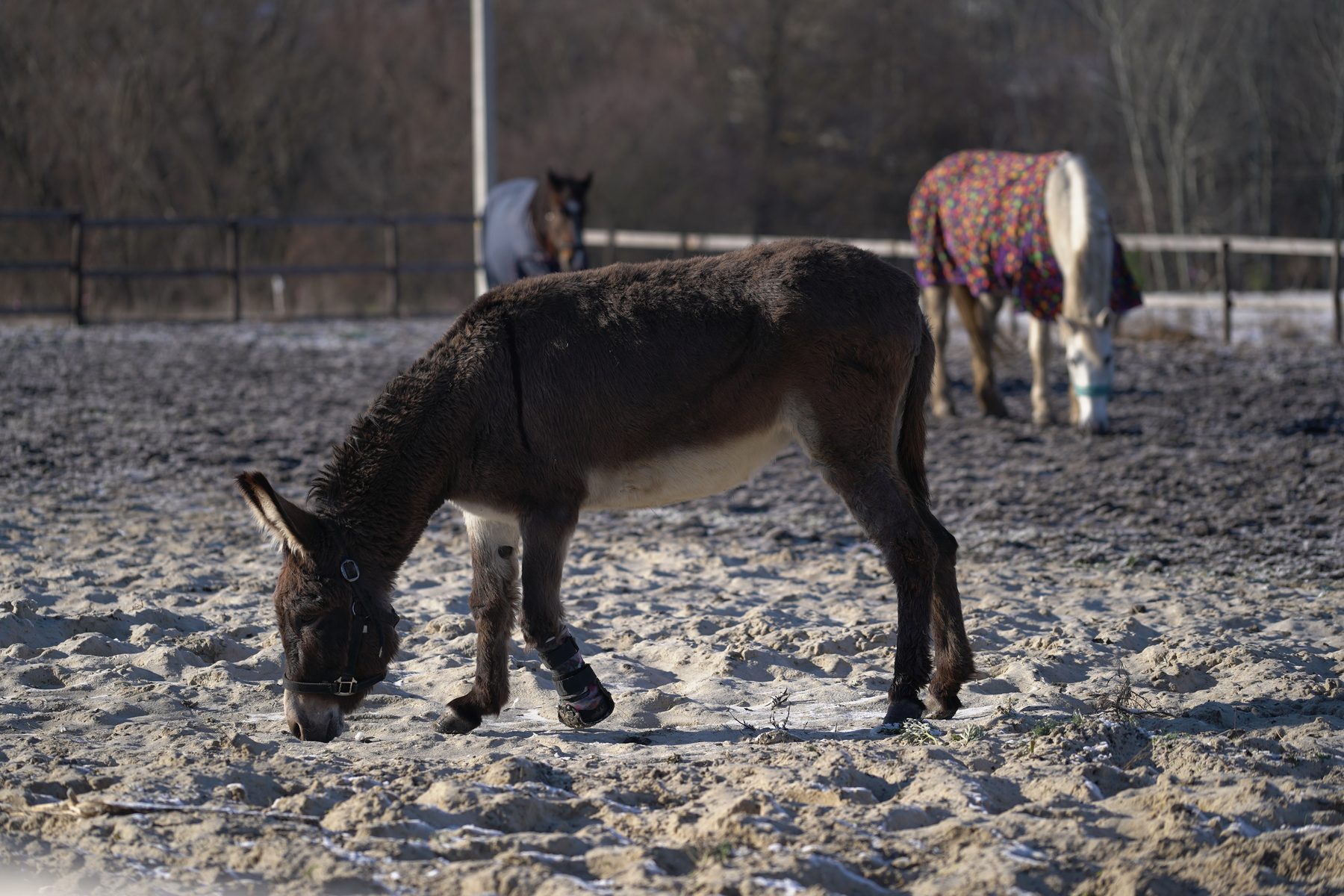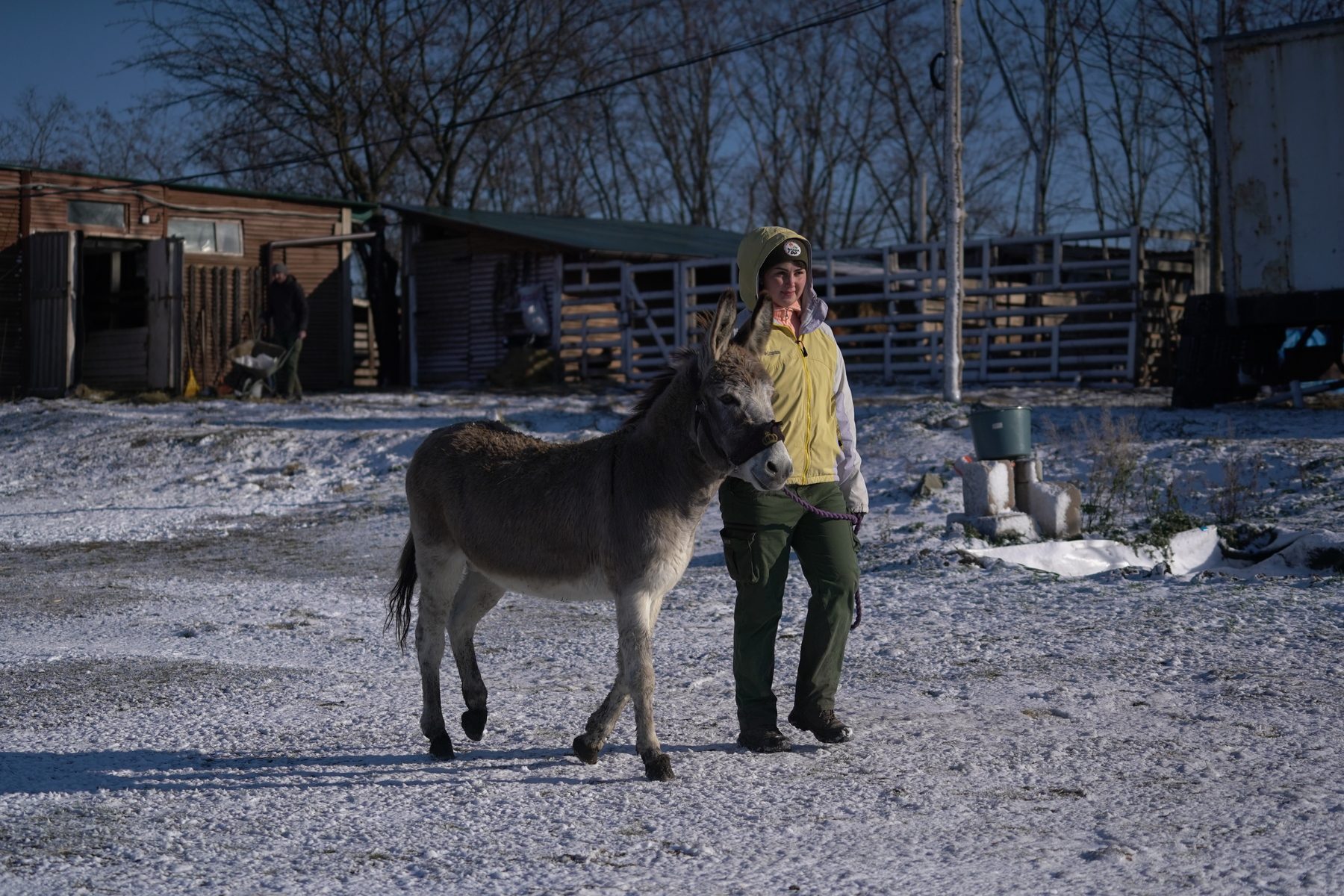The fear of being left unwanted, retiring, or losing everything is inherent in people. However, if we feel this emotion, we should transfer it to other creatures. Compassion and care are some of the hallmarks of a civilized society, especially regarding animals. During the war, farms faced the same problems as other communities: shelling, deaths, lack of funds, and psychological and physical fatigue. But some save the victims, providing them shelter, food, and a chance for a new life.
Journalist Alisa Vynohradova visited one of these farms. She learned the stories of animals evacuated from the war zones who were lucky enough to find a new home where they are loved.
Dnipropetrovsk region: Zelenyi Hai Farm and cheese factory
The Zelenyi Hai Farm and Cheese Factory in the Dnipropetrovsk region has hosted displaced animals since 2019. The military evacuating animals constantly approached their owners, Yevheniia and Anatoliy Molchanovs. “We called ourselves a farm, but it turned out to be extraordinary: first, we started rescuing animals and producing milk. We are not engaged in meat production at all. The cows that are not productive are retired,” says Yevheniia.
Primarily, horses, cows, and goats are transferred to the farm. Still, during this time, even crocodiles and hedgehogs have arrived in transit — animals the farmers had never seen before. A herd of goats was one of the first animals to migrate during the full-scale war. The goat farm owner was about to go to war and asked to shelter the animals, so they stayed here, and he visited them sometimes. Vuhlynka, a sheep brought by foreign volunteers from the Donetsk region, has a similar story. A local farmer had a flock of 500 sheep, of which only two remained because of the war. The owner says he plans to return after the war and take them back to his place.

Vuhlynka sheep. Photo: Bohdan Papadin
Due to the lack of resources, premises, and fodder, the farm can only take in some, although they are constantly asked to shelter 50 cows, 20 goats, or sheep. Despite this, the Molchanovs do the impossible.
“Every time I say that I don’t have the resources, strength, or people, there is a case when you can’t refuse, especially regarding the military. They take the animal out, risking their own lives. Refusal in the rear is disrespectful to them. So we got a lot of animals, especially donkeys. Two months ago, foreigners took another donkey, Yashka, from Sloviansk. They died… These are not always happy stories,” Yevheniia says.
Mamulia from Siversk
Mamulia, the donkey, is one of the animals that inspire farmers the most to continue their business. Mamulia was taken out of Siversk by the military. The animal was injured by shelling and had a hoof torn off. The amputation was performed in the Dnipro shelter “Virnist.” When Mamulia was fitted with the Ilizarov apparatus, she almost died. Yevheniya was by her side the whole time: “I stood there and said: “Mamulia, you can’t die, you’ve come out of hell, you’ve lost your child. You have to fight.'”

Mamulia donkey. Photo: Bohdan Papadin
The donkey recovered and was fitted with a prosthesis. Now, she lives on a farm, surprising everyone with her intelligence and inspiring with a thirst for life. “She is brilliant. If her bandage comes off somewhere in the field, she brings bandages in her teeth and gives them to me: until we fix it, she won’t leave. Mamulia is an example of resilience, endurance, and love of life,” Yevheniia is proud of her friend.
Himars donkey
Every animal on the farm has its own unique story. Himars donkey worked for the Ukrainian Armed Forces in the Donetsk region, carrying ammunition for the guys. Later, the military took him to the Odesa region, and when massive shelling began, Yevheniia and Anatoliy were asked to take the donkey with them. It was fate: while Himars was on the way to the farm, a Shahed flew into his unit. If the donkey had not been taken away, it could have died.

Himars donkey. Photo: Bohdan Papadin
The farm was also damaged by shelling: On September 3, 2023, a missile fell there. It did not explode, but caused a fire. About ten animals died at once, and several more died later: their hearts failed. The farm suffered significant losses as they prepared fodder and enclosures for the winter. People who cared responded, and one day, they raised money for the restoration.
Dashka’s story
The real soul of the farm is the dog DShK or Dashka. Yevheniia and Anatoliy needed a guard dog to protect the sheep from foxes. They met Dashka at the Virnist shelter — she approached Yevheniia and put her head on her lap. The fate of this dog also turned out to be complicated: in 2014, Dashka was found by the military in the Donetsk region, and she lived with them for a long time. Once a fire was in the dugout, Dashka led all the soldiers out and was the last to leave. A frame fell on her, damaging her back and head, and she even had to undergo a skin graft. Dashka still has visible scars and is missing part of her ear. Now, the heroine lives on a farm and is visited by the military, whose lives she once saved, who bring her goodies and thank her for her courage.

Farm owner Yevheniia Molchanova with Dashka. Photo: Bohdan Papadin
How to help Zelenyi Hai Farm
Most animals come to the farm through the military. But there are many cases when private farms need more strength to continue working and transferee. According to Yevheniia, more than 40% of small family farms closed during the war, so the main issue for farming today is survival. Evacuated animals are not productive, they rest on the farm. It is, and they more expensive to save one such animal than to buy one, so significant costs accompany this activity. The farm also operates as a cheese factory, using separately purchased cows. The owners of Zelenyi Hai are constantly looking for support programs, working on grant applications, and communicating with international organizations to ensure the farm’s continued operation and to continue to provide shelter for the animals. Yevheniia and Anatoliy Molchanovs are fighting for their friends, looking for options, and everyone can help them: there is a special bank account for fundraising mentioned on their Instagram.

